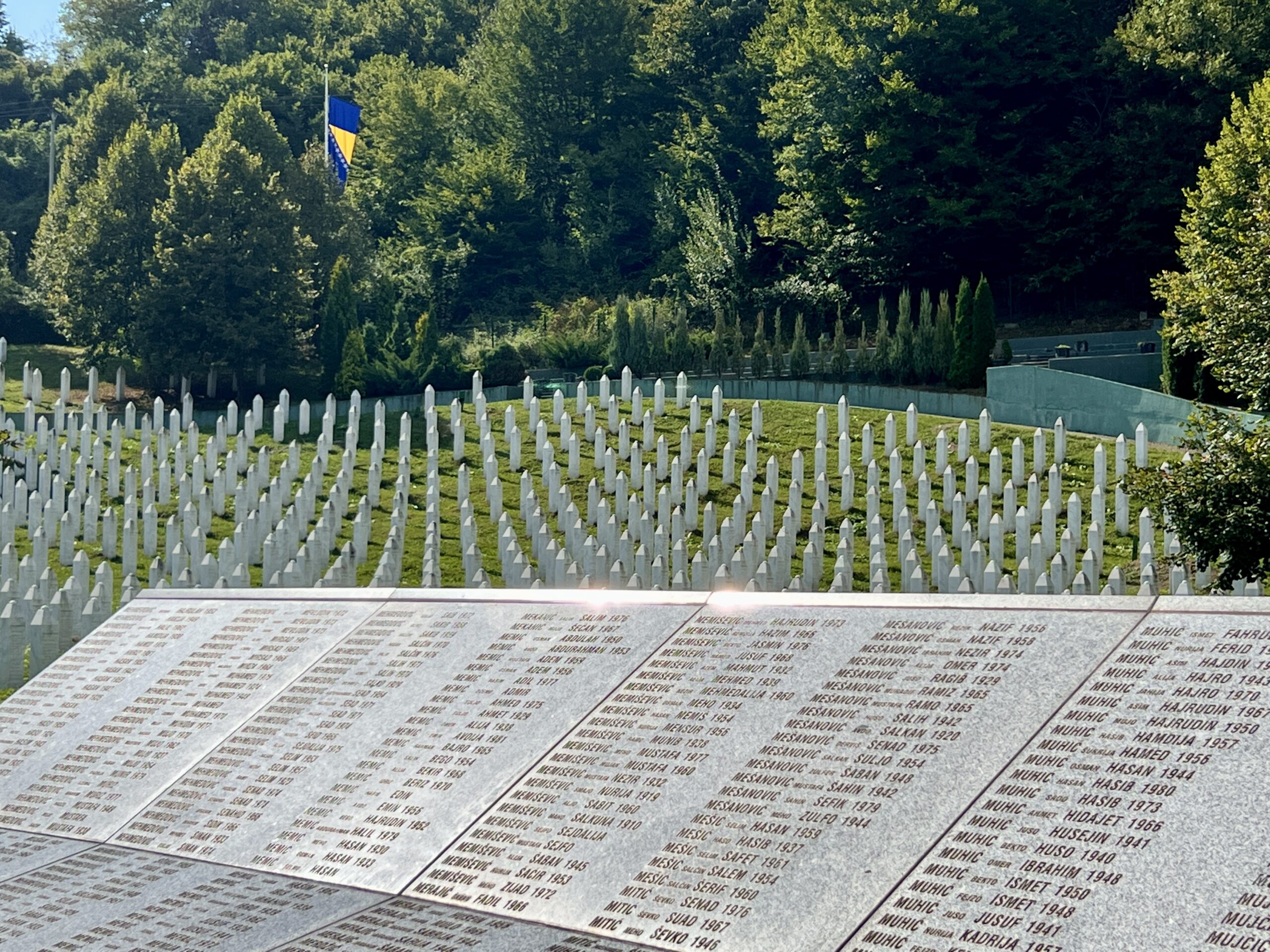Stage 6: Journey through the Balkans.
From Sarajevo to Srebrenica: A Journey into the Past
After our time in Sarajevo, we decided to visit Srebrenica to learn about the events of 1995 during the Bosnian War and the UN’s involvement. This post aims to uncover the historical significance of Srebrenica and the importance of understanding its tragic past. We spent one full day exploring the region of Srebrenica and we were lucky to have our previous guide who was also a Veteran of war. Our guide took us from Sarajevo and drove for 3.5 hours to one of the UN quarters in the Srebrenica area.
Republika Srpska
Our journey took us through the Republika Srpska, passing towns within Bosnia and Herzegovina that belong to this region. Srebrenica, our main destination, is situated in the Republika Srpska. Before we arrived, I must admit, I didn’t know much about what happened in Srebrenica during the war.
As we approached the UN headquarters, now converted into a museum and memorial, our guide pointed out some abandoned buildings where some of the executions took place. However, like every story, there is another side. Bosnian-Serbs also claim recognition for the 3,200 people murdered in the region during the war. From the car I saw different billboards highlighting the 3,200 Serb-Bosniak lives lost in the area and claiming for their recognition.
Inside the UN Headquarters
When we got to the UN Headquarters, which is now a memorial, we saw a huge cemetery where 8,000 people died during the Srebrenica genocide. This is the place to learn about what happened in the region during the war. The UN soldiers in Srebrenica were supposed to make sure Bosniaks were disarmed and protect the civilians because the town was declared a UN Safe Area in 1993. But unfortunately, Bosniak forces did not see with good eyes to be disarmed and the Bosnian Serb forces, led by General Ratko Mladić, took over, causing a big humanitarian crisis.

On July 11, 1995, Bosnian Serb forces took control of Srebrenica, and the Dutch UN peacekeeping forces (Dutchbat) couldn’t stop them. People in the town were told to leave, and many left in a hurry. So hundreds of people started to walk out of the area in order to reach the region of Tuzla to keep them safe from Bosnian-serbs. Sadly, during this exodus, Bosnian Serb forces, under Mladić’s command, engaged in mass killings and atrocities, separating thousands of Bosniak men and boys from their families.
Because the UN and other groups couldn’t protect the Safe Area, many people criticised them. The International Criminal Tribunal for the former Yugoslavia (ICTY) accused individuals of war crimes, including genocide, for what happened in Srebrenica. General Ratko Mladić, who was arrested in 2011, was found guilty in 2017 of genocide, war crimes, and crimes against humanity.

Legacy of Srebrenica
The consequences of the Srebrenica genocide remain a painful and controversial topic in the region. Efforts for justice, reconciliation, and remembrance persist, marked by annual commemorations in Srebrenica. The Dutch government has acknowledged errors and responsibility related to the genocide, with investigations revealing the inadequacy of Dutchbat in fulfilling its UN mandate.
Exploring the UN headquarters, It was curious how the soldiers’ dorms still have on the walls some writings with racist comments towards Bosnian people. We could also see a short documentary with old recordings from July 1995 (I was surprised how people from both sides were recording the exodus and how well documented are the high command military conversations during the previous days to the genocide).

Srebrenica–Potočari Memorial
After our visit to the UN headquarters, we went to the cemetery and memorial. This complex, officially known as the Srebrenica–Potočari Memorial, honors the victims of the 1995 massacre, with over 8,372 mainly Bosniak and some Croat victims.
Our journey continued to the town of Srebrenica, where you can clearly see the coexistence of different religions. From a high viewpoint, we observed a mosque and an Orthodox church standing side by side in this town, showing how people were able to live together.

As we concluded our day and returned to Sarajevo, I totally recommend visiting this area to learn about Republika Srpska and the events that unfolded during the war. In our next stage of our Balkans journey, we will explore Mostar and Banja Luka, marking the end of our two-week journey through the Balkans.


Leave a Reply